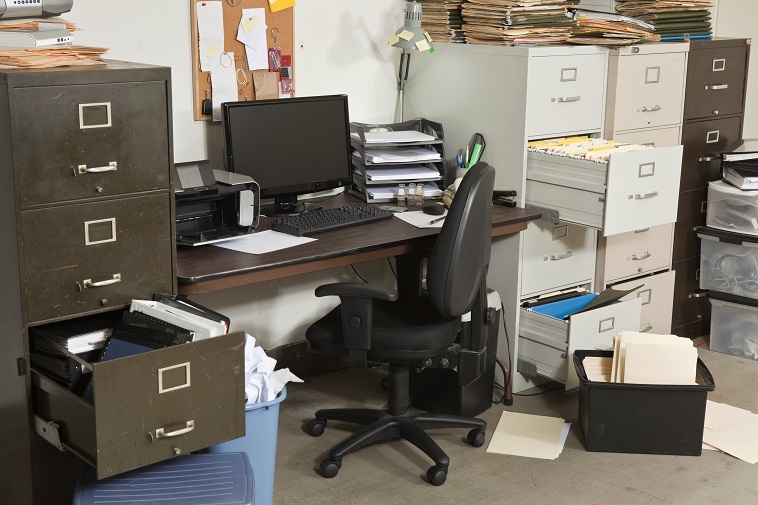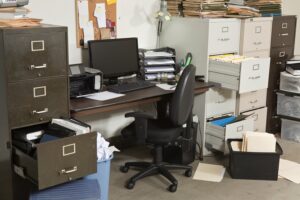Ensuring a hazard free office is of utmost priority, not only because accidents can be costly but because you want to make sure that your employees are kept safe from injury. According to these statistics by the Occupational Safety and Health Administration, tens of thousands die annually due to workplace disease. At the same time, about 4 million suffer from serious injury while on the job. If your office is not a safe place to work, this could lead to low worker morale, higher insurance costs, and of course reduced productivity.
The last thing you want is a lawsuit related to occupational hazards. You need to keep your office safe. All employers are governed by the Occupational Safety and Health Act. Violations can be serious. What most people don’t realize is that while there are many ways to keep your office hazard free. Let’s explore common hazards and some practical tips on how to keep your workspace clean, organized, and safe for everyone.
Identifying Office Hazards
Office hazards can be sneaky and often go unnoticed until they cause a problem. These hazards can range from physical risks to health-related concerns. Common hazards include:
- Clutter: Piles of paper, tangled cords, and misplaced items not only make your office look disorganized but also increase the risk of trips, falls, and ergonomic issues.
- Electrical Dangers: Overloaded power outlets, frayed cords, and exposed wires can lead to electrical hazards, including shocks and even fires.
- Poor Indoor Air Quality: Dust, mold, and poor ventilation can affect indoor air quality, leading to allergies, respiratory problems, and a decrease in overall health.
- Fire Risks: Blocked fire exits, improper storage of flammable materials, and outdated fire extinguishers can all contribute to fire hazards.
- Biological Threats: Germs and bacteria thrive in unclean environments, increasing the risk of illnesses spreading among employees.
Keeping It Clean
Maintaining a clean office doesn’t have to be an overwhelming task. By adopting some simple practices, you can create a hazard-free workspace:
- Regular Cleaning Schedule: Whether you use a professional janitorial service or in-house employees, be sure to set a schedule. Most companies set up 1, 3 or 5 day per week cleaning services.
- Tidy Up: Set aside time each day or week to declutter your workspace. File away papers, organize cables, and keep surfaces clean.
- Proper Storage: Invest in storage solutions such as shelves, cabinets, and organizers to keep items off the floor and desks. This reduces the risk of tripping hazards and makes it easier to find what you need.
- Electronics Maintenance: Check cords and plugs regularly for signs of damage. Avoid overloading outlets and use surge protectors to prevent electrical issues. Plus, make sure all cables and cords are covered or tied up.
- Clean Air Circulation: Keep windows open when possible to allow fresh air in. Regularly dust and vacuum to reduce allergens, and consider adding indoor plants to improve air quality.
- Fire Safety: Ensure that fire exits are clear at all times. Regularly inspect fire extinguishers and smoke detectors, and educate employees about fire safety protocols.
- Hygiene Awareness: Encourage employees to maintain personal hygiene, especially during flu seasons. Provide hand sanitizers and tissues for easy access.
Promoting a Safe, Hazard Free Office Environment
A clean office goes hand in hand with a safe office. Here are some additional steps you can take to ensure the safety of everyone in the workspace:
- Ergonomic Setup: Arrange desks, chairs, and computer equipment to promote proper posture and reduce the risk of repetitive strain injuries.
- Training and Awareness: Conduct regular safety training sessions for employees to educate them about potential hazards and safe practices.
- Emergency Preparedness: Develop and communicate emergency plans, including evacuation routes and assembly points. Practice drills to ensure everyone knows what to do in case of emergencies.
- First Aid Kits: Keep well-stocked first aid kits in accessible areas and ensure that employees know where to find them.
- Collaborative Effort: Make office cleanliness and safety a collective effort by involving all employees. Encourage them to report hazards or suggest improvements.
As you can see, maintaining a hazard free office through cleanliness and safety measures is not only beneficial for individual productivity but also for the overall well-being of everyone in the workspace. By staying organized, addressing potential risks, and fostering a culture of cleanliness, you can create an environment that promotes health, safety, and success. Remember, a clean office today ensures a safer and more productive tomorrow.



